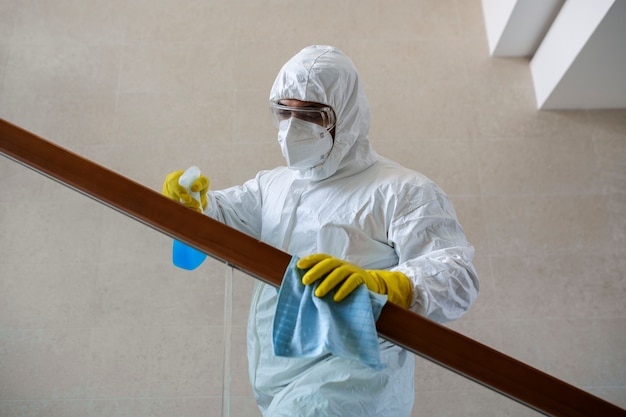
Expert Mold Remediation Services in Bloomingdale
Mold growth in homes and commercial properties can pose serious health risks and structural concerns. In Bloomingdale, the demand for expert mold remediation services has been on the rise as property owners seek effective solutions to combat this persistent issue. With the right knowledge and professional assistance, mold can be effectively managed and eradicated, ensuring a safe and healthy environment.
Understanding Mold and Its Impact
Mold is a type of fungus that thrives in damp, humid environments. It can grow on a variety of surfaces, including walls, ceilings, and floors, and is often found in areas with poor ventilation or water damage. The presence of mold can lead to several problems, including:
- Health Risks: Exposure to mold can cause allergic reactions, respiratory issues, and other health problems, especially in individuals with pre-existing conditions.
- Structural Damage: Mold can compromise the integrity of a building by weakening structures and causing decay.
- Unpleasant Odors: Mold often produces a musty smell that can permeate the entire property.
To effectively address mold issues, it is crucial to understand its causes and effects. Read more about this topic.
The Mold Remediation Process
Inspection and Assessment
The first step in mold remediation is a thorough inspection and assessment of the affected area. Professionals will identify the type of mold, the extent of the infestation, and the underlying causes, such as leaks or humidity issues.
Containment and Air Filtration
Once the affected areas are identified, containment measures are put in place to prevent the spread of mold spores. This often involves using physical barriers and negative air pressure. Air filtration systems, including HEPA filters, are used to capture airborne mold spores and improve air quality.
Mold Removal and Cleaning
The next step involves the physical removal of mold. This process can vary depending on the surface and extent of mold growth. Non-porous surfaces are often cleaned with antimicrobial treatments, while porous materials may need to be removed and replaced. Learn more in this detailed guide.
Restoration
Restoration involves repairing or replacing damaged materials, such as drywall or carpets, and ensuring the source of moisture is addressed to prevent future mold growth. This step is crucial for returning the property to a safe and habitable state.
Preventing Mold Growth
Preventing mold is often more effective and less costly than remediation. Here are some strategies to help prevent mold growth:
- Control Humidity Levels: Keep indoor humidity below 60% by using dehumidifiers and air conditioners.
- Improve Ventilation: Ensure proper ventilation in high-moisture areas, such as bathrooms and kitchens.
- Fix Leaks Promptly: Address leaks in roofs, windows, and pipes as soon as they are detected.
- Regular Cleaning: Clean and dry any damp or wet materials within 24 to 48 hours.
By implementing these preventive measures, property owners can reduce the risk of mold development significantly. Explore further insights here.
The Importance of Professional Mold Remediation Services
While DIY methods may seem appealing, professional mold remediation services offer several advantages:
- Expertise and Experience: Professionals have the knowledge and experience to handle mold issues effectively and safely.
- Advanced Equipment: Specialized tools and equipment ensure comprehensive mold removal and air purification.
- Long-term Solutions: Experts provide solutions that not only remove existing mold but also prevent future occurrences.
- Compliance with Standards: Professional services ensure compliance with health and safety standards, providing peace of mind to property owners.
Choosing a reliable mold remediation service is critical for ensuring a thorough and lasting resolution. Find additional information here.